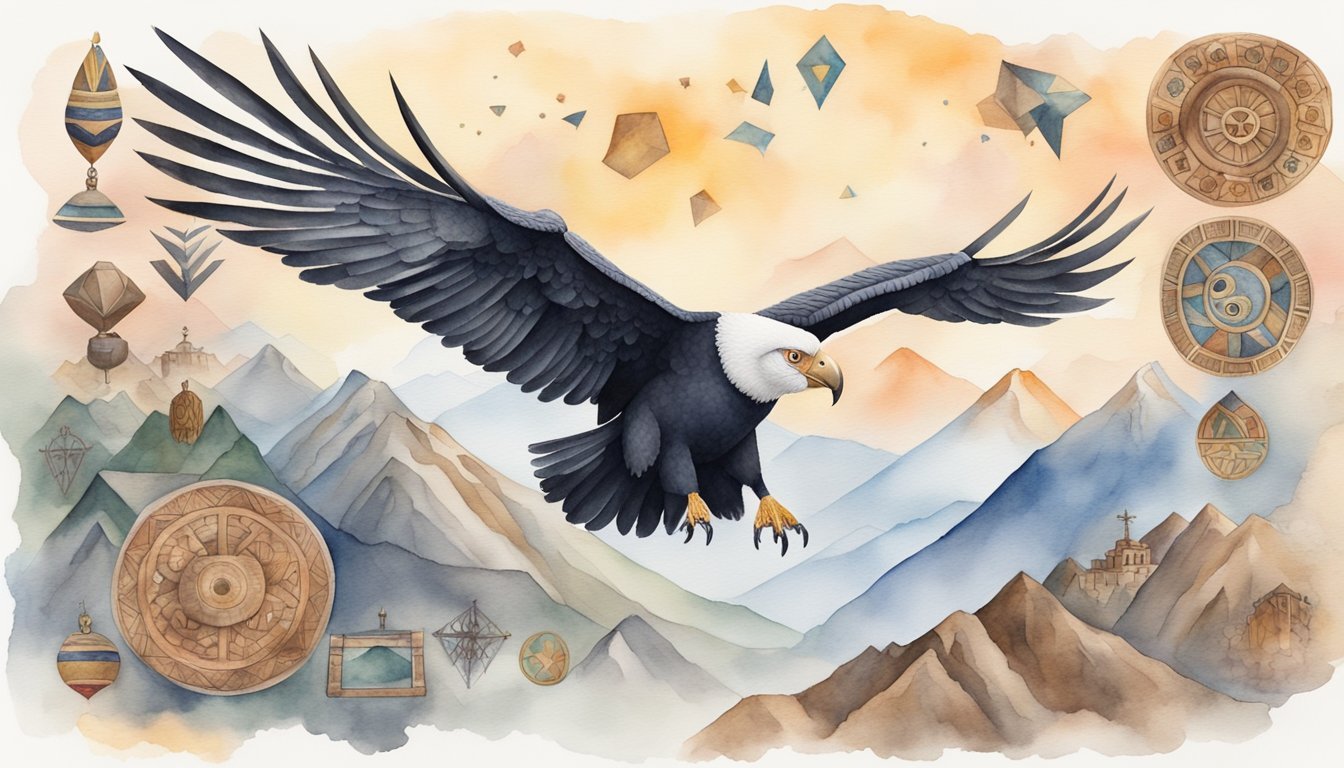Andean Condor Overview
The Andean Condor (Vultur gryphus) is a remarkable bird, revered as a national symbol in multiple South American countries. It is distinguished by its incredible wingspan, making it one of the largest flying birds.
Physical Characteristics
The Andean Condor is a member of the vulture family, notable for its size and longevity. Adult condors reach a wingspan of up to 3.3 meters (10 feet 10 inches), which helps them glide on air currents with little effort. Their plumage is primarily black, with a collar of white feathers around the neck and, at times, white markings on the wings. One of the more striking features of the Andean Condor is sexual dimorphism where males display a distinctive wattle and a large comb on their head, while females lack these and are slightly smaller.
Habitat and Distribution
These birds are indigenous to South America and are primarily found along the Andes mountain range and the Pacific coast. The Andean Condor prefers rocky, open areas where it can ride thermals effectively. They have been observed living at altitudes of up to 5,000 meters (16,000 feet), as noted in their habitat preferences.
Diet and Scavenging Behavior
As scavengers, Andean Condors play a crucial ecological role, feeding primarily on carrion. They locate their food using their keen eyesight while soaring high in the sky. Given their role as vultures, they help prevent the spread of disease by consuming dead animals, thereby contributing to the health of their ecosystem. They have adapted to go without food for several days and gorge themselves when food is abundant, as detailed in their feeding habits.
Conservation and Cultural Importance

The Andean condor faces significant threats that have pushed it to become a vulnerable species, while its symbolic presence resonates deeply across South American culture and heritage.
Threats and Conservation Efforts
The Andean condor has a declining population due to a variety of threats including habitat loss, hunting, and secondary poisoning from lead bullets in carrion. These birds of prey are vital to the ecosystem as scavengers, cleaning up carcasses and preventing the spread of disease. Conservationists are working to tackle these issues with several strategies, such as habitat protection, breeding programs, and advocating for the use of non-lead bullets by hunters. The condor’s vital role in South America’s Andean region has spurred a monumental effort to save the Andean condor, which includes tracking and studying them to better understand their behavior and needs.
In some regions like Patagonia, tracking efforts have been implemented to better understand their distribution and movements across the large range of the Andes mountains. Conservation programs in countries such as Bolivia, Chile, Colombia, Ecuador, and Peru are critical as these are the nations where the national bird finds its home, often making their nests on inaccessible rock ledges at high elevations to avoid predators.
Andean Condors in Culture and Mythology
The Andean condor is not just a bird of prey, but a potent symbol of power and an integral part of South American culture and folklore. Revered in mythology as an immortal sun deity, this majestic bird is celebrated in art and is part of the national shield of multiple countries, including Bolivia, Chile, Colombia, and Ecuador, where it represents various noble values. As an iconic figure, it appears in countless cultural depictions, entwined with the identity and traditions of many communities. Monogamous in nature, Andean condors mate for life; both the male and female share responsibilities of incubating the egg and raising their chicks. The dedication of these birds to their offspring, who stay with the parents for up to 2 years, mirrors their prominence as a patriotic emblem and a national symbol across Andean nations.
Given its remarkable lifespan that can extend up to 70 years in the wild, the Andean condor has been a witness to the unfolding of human history in the region, further underscoring its cultural significance. Its conservation is crucial not only for the health of the Andes’ environments but also for the preservation of an important part of South American heritage.

